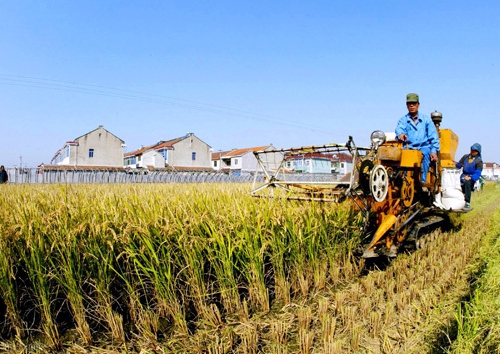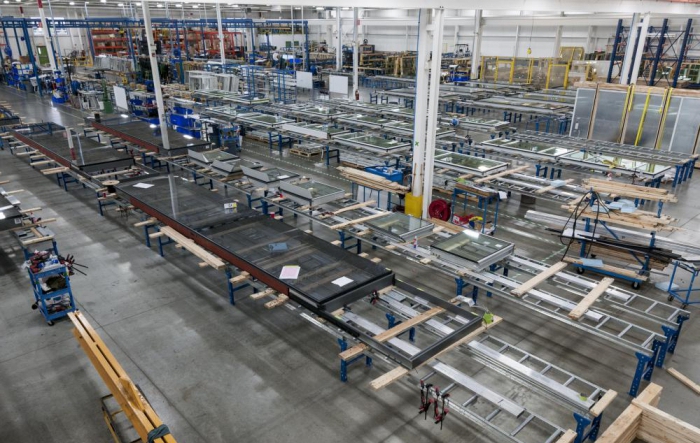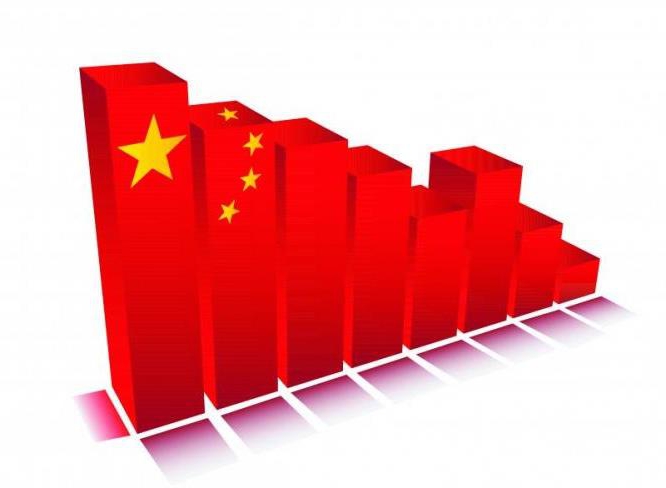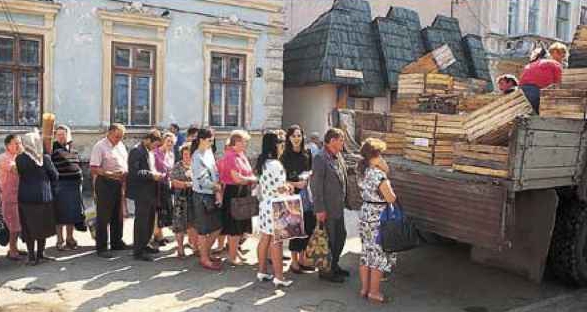We, as residents of the post-Soviet space, are extremely close to the command economy as a system from which we have been trying to get out of it for several decades. Let's see why it is so difficult to switch to the market, and what is the characteristic of the planned regime for both sides of the business.
The concept and types of economic systems
Economic systems from a theoretical point of view are a combination of various market elements that, when interacting with each other, form a single structure within the country, which takes into account not only the aspects of production and consumption, but also the distribution of goods and labor resources.
Modern systems are divided into three types:
- market;
- team;
- traditional economy.
Although from a historical point of view, if we consider the development of the market in stages, they will have the following classification:
- pre-industrial economy (times of prosperity of agriculture as the main niche of production);
- industrial (appeared with the emergence of industry);
- postindustrial (developing today, characterized by the prosperity of the service sector and information technology).
But back to the modern understanding of the economic system. Let's first try to highlight the main key points that characterize this or that type, and the table “Market, team, traditional economy: main features”, which is presented below, will help us in this.
| Factors | Market | Team | Traditional |
| State intervention | weak | complete | missing |
| Tax administration | tough | soft | the minimum |
| Basic ownership | private | state | private |
Well, now let us dwell in more detail on each point.
Characteristic of a market economy
This is the most popular system today, which is characterized by the free formation of prices for products and services depending on the ratio of supply and demand. The state, as a rule, does not interfere at all economic relations between business entities, and all government participation is to create legal acts. Authorities can only ensure that the latter are respected.

That is why the market and command economies are completely contradictory systems, but more on that later.
But what sways the state’s non-interference in market processes, this issue is very controversial. Not always the relationship of supply and demand can reach the so-called consensus. For example, in crisis periods there is absolutely no demand for some groups of goods and services, therefore, the government sector may be the only buyer, however, the market system of the economy completely excludes this possibility.
The concept of traditional economics
Traditional and team economies are not the same thing. However, both systems have some similarities, although the first is more aimed at maximizing the development of own wealth of the national economy, therefore its most distinctive feature is the most optimal development of rural industry.

As for the values in this system, banknotes are not as important as, for example, essential goods. Therefore, often the traditional economy is characterized by relationships, which we used to call barter exchanges.
At first glance, it seems that countries with a similar system of economic relations no longer exist, but there are more than enough of them in the open spaces of Central Africa.
The concept of a team economy
To begin with, let's decide on what principles the command and administrative economy is based, or how it is also commonly called - planned.

Within the framework of this system, the state plays an important role in the economic regulation of the country. It is the authorities that decide which goods, in what quantities and at what price to produce and sell. These data are taken not from the real correlation between supply and demand, but from planned indicators according to long-term statistical data.
Signs of a team economy
Subject to a planned economic system, there is never an overabundance of manufactured goods, since the government is unlikely to allow the inappropriate use of its own resources. Therefore, often the main sign of a command economy is a shortage of certain goods. Moreover, as a rule, this product is everywhere of identical quality, since in such countries there is no sense in building the same type of shops on every street and producing more expensive products, because anyway the buyer has no choice - he will take whatever is left on the shelves.
Also a sign of a command economy is the appropriate use of labor resources. The explanation for this is very simple: there is no overproduction - there are no overtime hours per shift, there is no overtime of personnel.
Well, thanks to the state’s constant support of entrepreneurship, there are such signs of a team economy:
- permanent subsidies;
- loyal taxation;
- Clear planning of a break-even market.
So, we not only determined the foundations of this economic system, but also assigned the role of state influence in it. Now let's try to understand what production and property itself mean for entrepreneurs in a planned regime.
The role of ownership in a command economy
As we have already found out, the market economy is aimed at private production, while the traditional one is aimed at collective production. Well, what features of the command economy indicate the advantage of a particular form of ownership in this system? It is easy to guess that all industrial organizations in the vast majority belong to government bodies. Here, ownership rights are divided into national scales as well as municipal ones.
Regarding cooperative forms of ownership then they also take place in the command economic system, but, as a rule, they do not apply to production organizations from which financial profit can be derived, but to business entities with the receipt of their own benefit. In other words, cooperative housing funds, garages, preschool institutions are quite common in the planned economic system.

Private property in a command-administrative society extends to property intended for housekeeping and no more.
The planned economy in the life of the population
As mentioned above, the command economy is in no way connected with human needs. In other words, if we simplify the process of this system to two actions, then approximately the following algorithm of the product circulation in society will come out.
- The government decides in which accordance, according to industry shares, the products should be produced.
- The goods produced are distributed throughout the state, taking into account the assumption that the population evenly consumes both food and medicine, and even household appliances in accordance with the volumes released in each geographical area of the country.
We all understand that this approach is not entirely correct - perhaps someone in the south of the country does not need a new TV, but more detergents are needed for the dishes, and some of the northerners need more warm socks. But such are the realities of a planned economy, which more or less successfully flourished at one time in the vastness of many powerful states.

As for the general welfare of the population, under the command system, each person earns in proportion to how much work he performs. But, despite this, the average salary level in the country remains rather low.
Examples of countries with a planned economic system
The command and administrative economy began its active and fruitful development in the post-war times, namely in the 50s of the twentieth century. At that time, the world was subject to a terrible production crisis, and therefore such socialist countries like China, Cuba, and the closest to us in spirit and understanding - the USSR, which switched to planned standards in 1917, became a vivid example of this system.

It is difficult to say unequivocally whether this decision was effective in those days. Given that the whole industry was in a deplorable state, and it was problematic to settle something on the same supply-demand ratio, it is likely that the policy of state intervention at that time was the best way out of this situation.
However, if we compare the statistics of GDP growth for a couple of post-war decades between the countries of Western Europe and the states-representatives of socialism, we will see that the latter were many times behind in terms of growth.
Positive aspects of the command economy
Despite all of the above factors, it cannot be said that the command system of the economy has no advantages.
The manufacturer does not need to spend extra financial and labor resources to promote his product - he always has a quota allocated by the state, which the population needs and which they will definitely buy. And they will do this because the government is the only monopolist in the commercial market, so there can be no competition a priori.
As for society, a planned economy excludes any class stratifications within society. In the realities of this system, there are no poor and not too rich, since everyone's wages tend to average.
Theoretically, we can say that many of the problems present in a market economy, within the framework of the command order, are easily solved.
Disadvantages of the command economy
Due to the fact that all production is led by the highest authority, and this is done on equal terms and conditions with respect to each business entity, any inclinations of a competitive environment are excluded. Therefore, the team economy nullifies any zeal of the entrepreneur to improve his product, because no matter how hard he tries, he still can’t get more material benefit.

And since all products are distributed evenly across the country, then wages are evened out as much as possible, so the staff completely disappears any interest in improving the quality of their work. If an employee of this category is supposed to have a salary within a certain amount, then, no matter how specialized he is in his field, he will not be able to get more.
Difficulties in leaving a planned economy
It is difficult to say which system is better - a market economy or a team economy. Each in its own way is good in certain conditions: sometimes government intervention is extremely necessary, but sometimes the quality of the baby food produced in a competitive environment is more important than the equal distribution of milk throughout the country.
In any case, the period of transition from a planned system to a market system is extremely difficult. We have all witnessed how this affected practice after the collapse of the USSR.It is clear that each state cannot become successful in a matter of years, therefore, in the political economic theory, there is such a thing as a transition economy. It is characterized by instability, uncertainty and deformation of the entire economic national structure, but in our world everything is for society, so we must build further business ourselves.








